
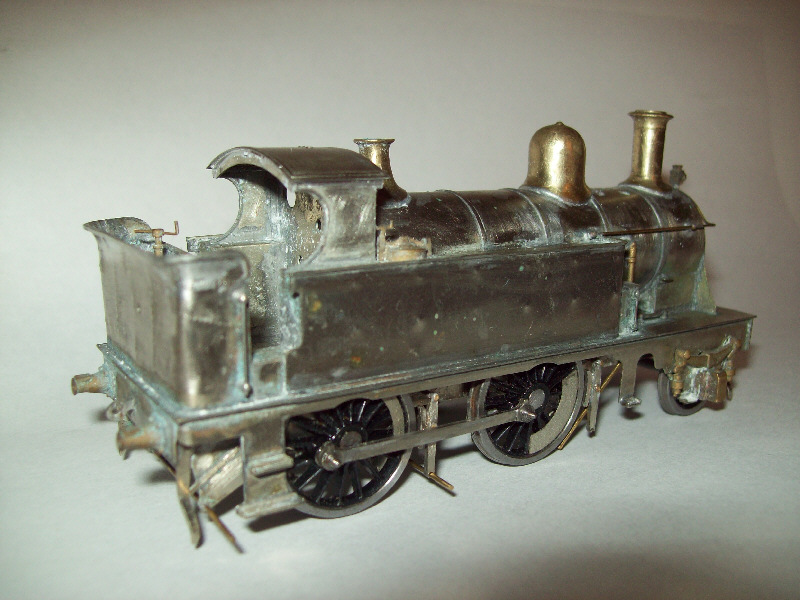
A small selection of nameplates (21) were available from Modelmaster Jackson Evans. However this company now seems to have ceased trading. An order I placed over 8 months ago was accepted and the money taken, but nothing delivered or any communication at all, although their website shows this order as still active.
| Name | Wheel Arrangement | Class |
| 2135 Magpie | 4-4-0ST | Heron (D46) |
| 2138 Stromboli | 0-6-0 | Banking (A61) |
| Abbot | 4-4-0 | Abbot (A32) |
| Bee | 2-4-0T | Metropolitan (A43) |
| Bithon | 0-6-0 | Banking (A61) |
| Brigand | 4-4-0ST | Bogie (A42) |
| Brunel | 2-4-0 | Victoria (A33) |
| Bulkeley | 0-6-0T | Sir Watkin (A63) |
| Comet | 2-2-2 | Sun (A14) |
| Dog Star | 2-2-2 | Priam (A12) |
| Dragon | 4-2-2 | Alma (A17/18) |
| Europa | 0-6-0 | Caesar (A57) |
| Hedley | 2-4-0 | Hawthorn (A35) |
| Leo | 2-4-0 | Leo (A31) |
| Minos | 2-2-2 | Priam (A13) |
| North Star | 2-2-2 | Priam (A12) |
| Osiris | 0-6-0 | Caesar (A57) |
| Ovid | 4-4-0ST | Bogie (A42) |
| Plato | 0-6-0ST | Banking (A61) |
| Polar Star | 2-2-2 | Priam (A12) |
| Stewart | 2-4-0 | Hawthorn (A35) |
The old Kings Cross nameplates are still available from the Great Central Railway Society. These include the nameplates originally suplied with the Mikes Models, and Keyser Rover kits.
| Name | Wheel Arrangement | Class |
| Electra | 2-2-2 | Priam (A13) |
| Centaur | 2-2-2 | Priam (A13) |
| Great Western | 4-2-2 | Alma (A17/18) |
| Premier | 0-6-0 | Fury (A53) |
| Tornado | 4-2-2 | Alma (A17/18) |
| Fireball | 2-2-2 | Priam (A13) |
| Goliah | 0-6-0 | Fury (A51) |
| Rover | 4-2-2 | Alama (A17/18) |
| Phlegethon | 2-2-2 | Priam (A13) |
| Firefly | 2-2-2 | Priam (A13) |
| Ixion | 2-2-2 | Priam (A13) |
| Mentor | 2-2-2 | Priam (A13) |
| Taurus | 2-4-0 | Leo (A31/41) |
| Tityos | 0-6-0 | Fury (A51) |
Custom etched nameplates are available from Narrow Planet, with a lead time of around 6-8 weeks. Most locomotives would use the "Serif B" style rectangular plates (formerly known as GWR B), but as they are custom plates they are quite happy to do specials. I'm not sure if they can do curved plates as for the Victoria and Rover classes. For 4mm scale the correct size would be about 2.3mm for the boiler mounted plates, and around 2.0mm for the frame mounted plates as on the Star and Leo classes.
To provide some nameplates for my model(s) of the Rover class, I decided to try and design my own, and print them on my Photon printer. The font used is not totally correct, but it's pretty close, and in 4mm scale you would need very good eyesight to see the differences. They won't be as easy to paint as brass ones though.

There have been 6 models of broad gauge tenders produced in 4mm scale, only 3 of which are currently available
This small tender was introduced in 1856 for use on lines having small turntables. It was used with many of the Victoria class, with which it was contemporary, and the other earlier passenger engines.
A whitemetal kit by Mike Sharman, and latterly MRS of Blackrod. The design has the front wheels floating, so the tender rests on the drag beam of the locomotive to give weight for adhesion. The wheels provided with the kits were 00 standard, provided with longer axles. Not at all suitable for use on scale layouts.
I obtained a poorly built, partialy complete model of this tender second hand, which will need stripping and rebuilding. It is missing several components, most notably the springs which should be above the footplate, the handbrake, and the 'coffin' for the travelling porter.

I have constructed a 3D model of this tender, based partially on the Sharman model, which will be printed on my Photon printer.
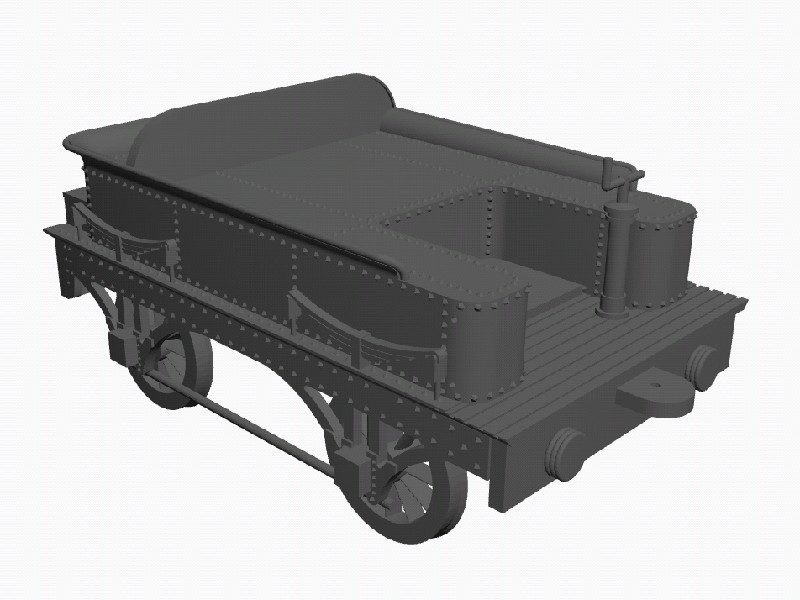


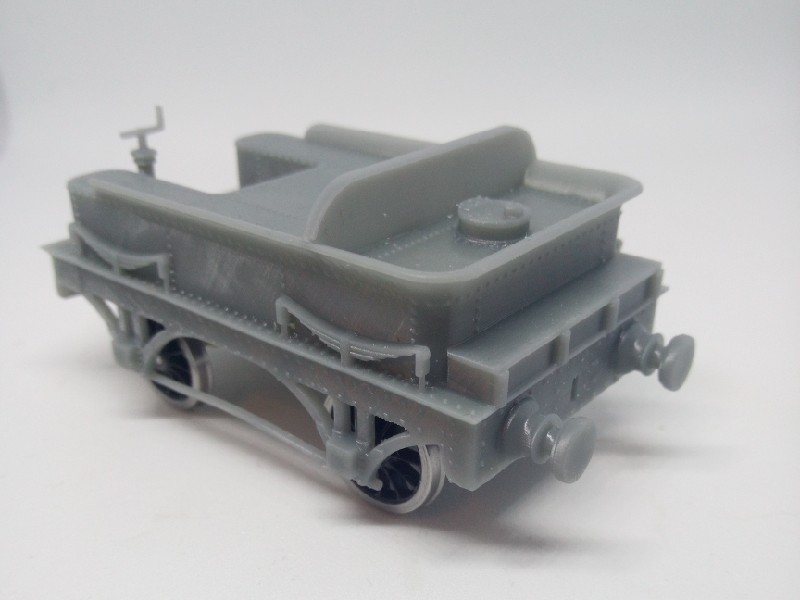

This is the standard design of tender used for the early goods locomotives and many of the early passenger locomotives. Originally these had a narrower tank raised up on a timber base. They were subsequently rebuilt with wider tanks.
A whitemetal kit by Mike Sharman, and latterly MRS of Blackrod. The design has the front and centre wheels floating, so the tender rests on the drag beam of the locomotive to give weight for adhesion. The wheels provided with the kits were 00 standard, provided with longer axles. Not at all suitable for use on scale layouts.
I have constructed a 3D model of this tender, based partially on the Sharman model, which will be printed on my Photon printer. Shown is the first prototype model, and prototype chassis - not perfect, but promising.
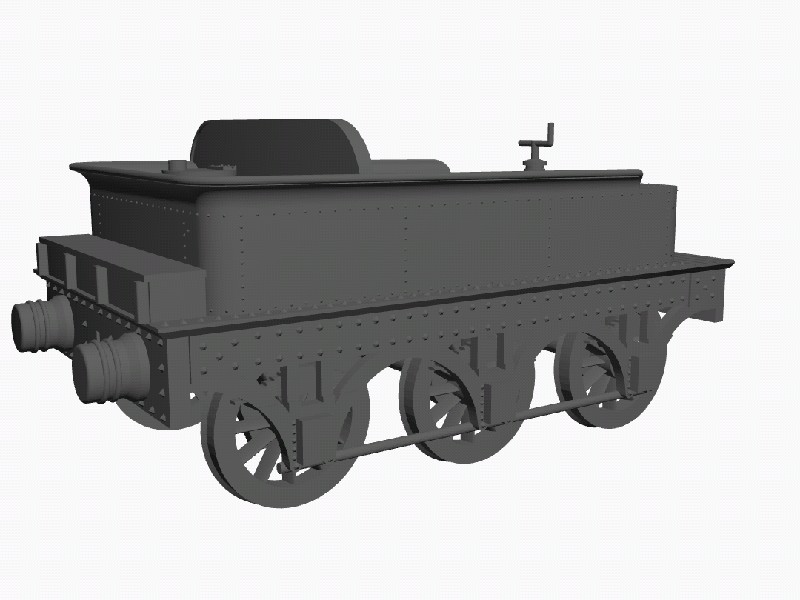

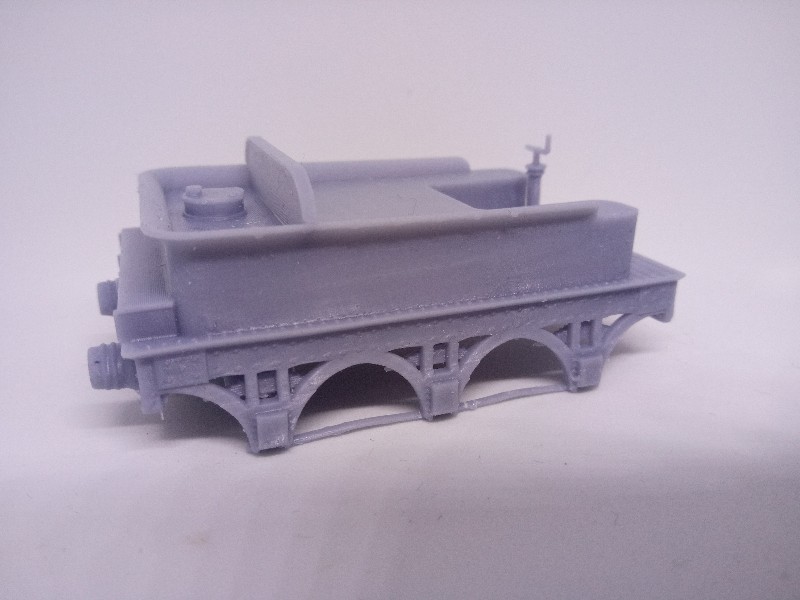
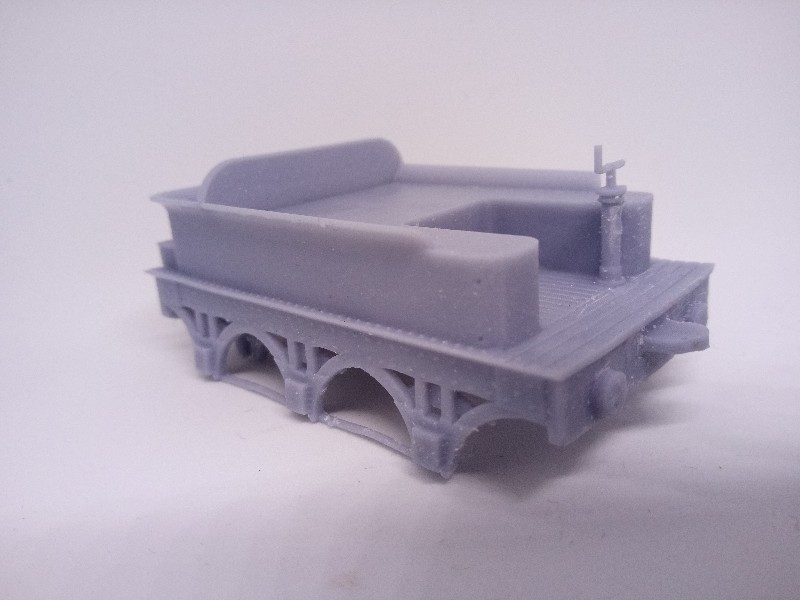
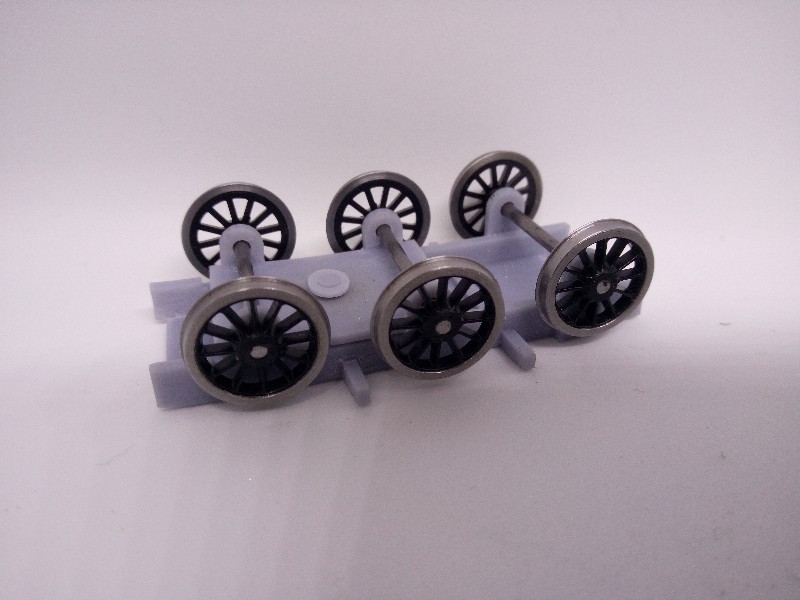
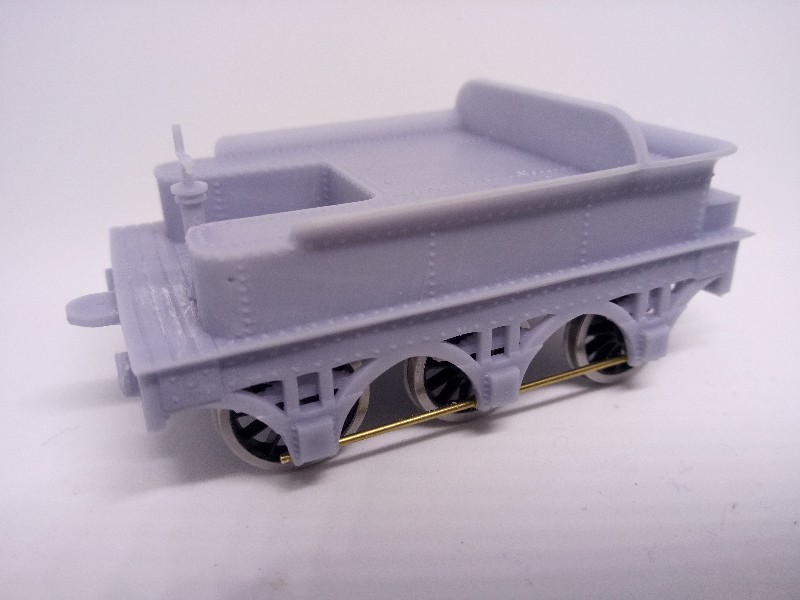
This type of tender was coupled to most of the Rover class, but was also used for many of the convertible locomotives.
A whitemetal kit originally included with the Keyser Milestones Rover kit. Pirate copies have been available on eBay from time to time. When this kit passed to IKB models, it was modified to include motorisation. The bottom of the coal space was cut away to give room for the motor, and a dummy coal casting included. Many pirate copies of this have been produced in recent years, and sold on eBay. The kit is now with the BGS as kit FL06, but not currently available due to lack of a suitable chassis - the trade officer has a dislike of motorised tenders, but there is no design for a substitute.
A 3D printed model of this tender is also available from Sparkshot Custom Creations printed either by Shapeways, or on one of their own Photon printers. Unfortunately there is currently an error, in that the rear tender corners are squared off, and not rounded.
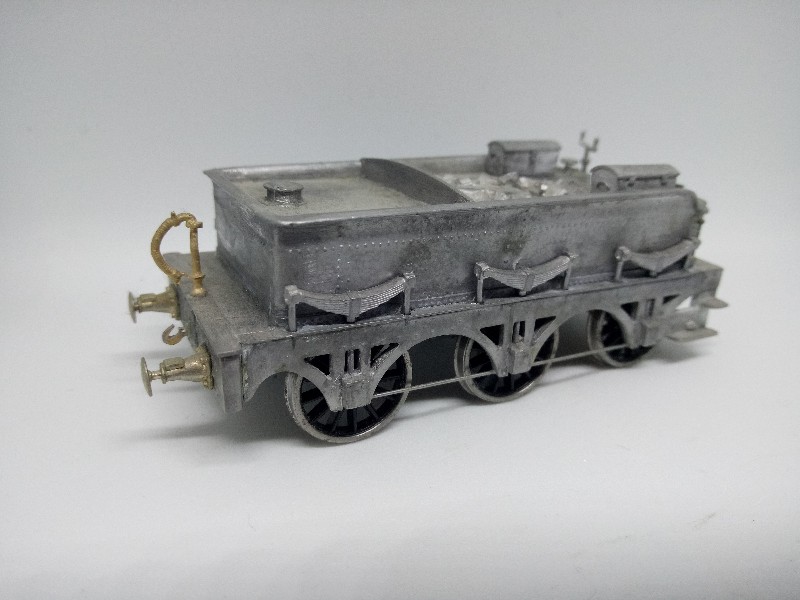
This type of tender was introduced with the 'Iron Duke' class of locomotives in 1848, but could be found coupled to many other classes
The only currently available tender kit from the BGS is etched brass kit FL07. This kit does not include a proper chassis, just some primitive axle supports which the builder is left to construct a chassis around.
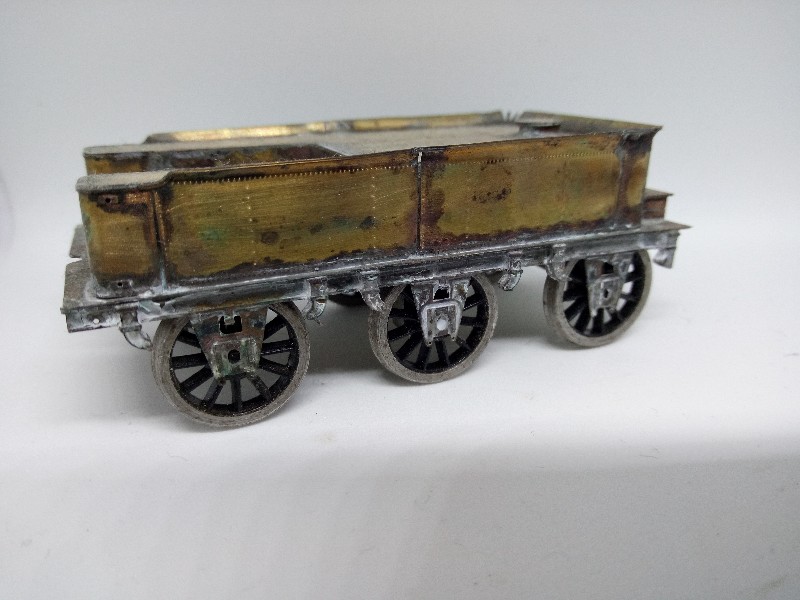
A 3D printed model is available from Sparkshot Custom Creations is available printed either by Shapeways, or on one of their own Photon printers. Unfortunately there is currently an error, in that the rear tender corners are squared off, and not rounded.


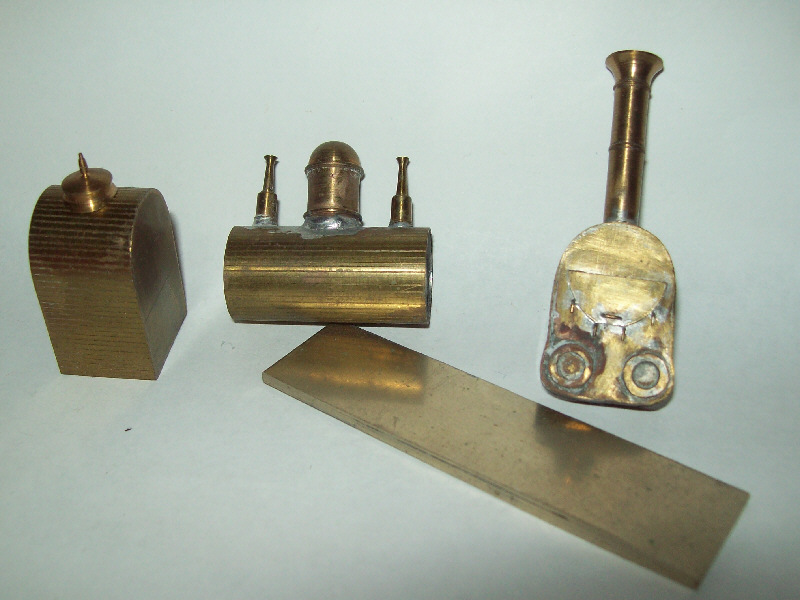
North Star was the GWR's first locomotive, delivered in 1837. It had originally been built by R.Stephenson & Co. for the 5'6" gauge New Orleans Railway. It was easily the most reliable of the company's early
engines, and a further 11 were ordered, being delivered between 1839-1841. They all seemed to differ in detail, and were withdrawn between 1864 and 1871.
This was my first attempt at scratchbuilding a broad gauge locomotive, and at the time, fretting out the frames defeated me (or rather a method of marking out which would survive being fretted out defeated me). The fittings were turned up on the lathe, and are quite nice, so this project may be resurrected.

Six of the Star class engines were later converted to tank engines, being given a longer boiler and an additional pair of front carrying wheels. There is some doubt over the alterations to North Star, and it may have been given a smaller tank than the others and kept it's original frames and tender.
| Bright Star |
| North Star |
| Polar Star |
| Red Star |
| Rising Star |
| Shooting Star |
Built from a variant of the old Mike Sharman kits available on ebay. Advertised as Red Star, this would be the most difficult loco to model as it was fitted with smaller front carrying wheels, so would involve moving the axleboxes and filling in the splashers.
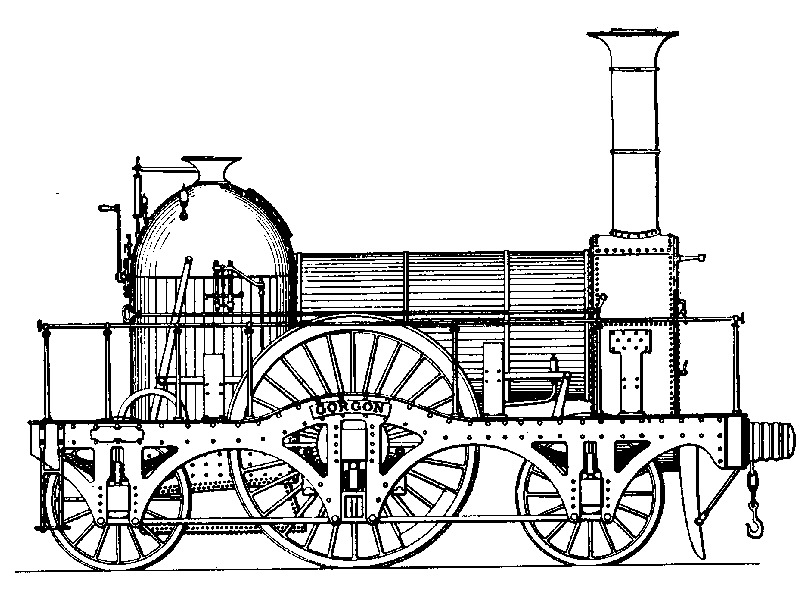
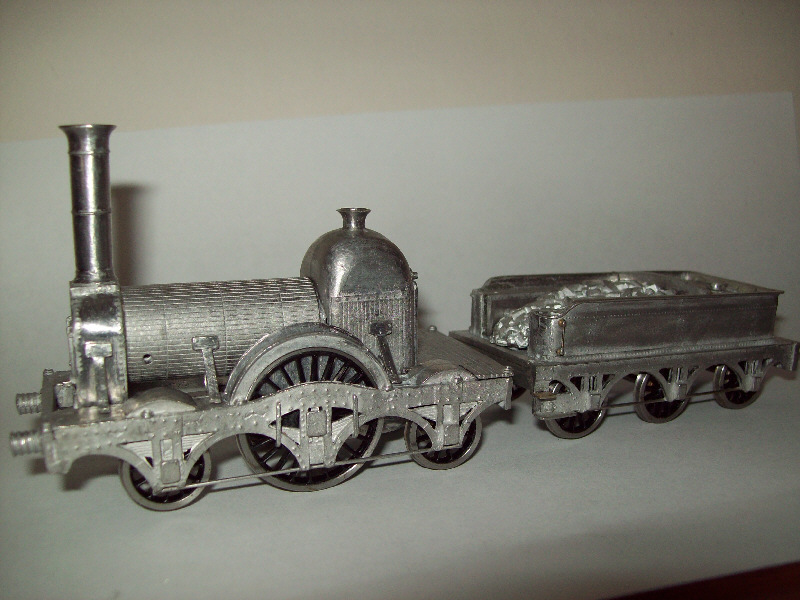
The Firefly class was designed by Daniel Gooch in 1840, based on his experience with the Star class locomotives. 50 locomotives were built by 7 different builders over a period of 2 years. The last in service was withdrawn in 1879.
Built from one of the old Mike Sharman whitemetal kits as available occasionally on ebay. These are pretty obviously recast using original parts as a master, and so the castings are not as crisp as the originals, and there are several voids in the castings that need filling. They are missing some of the parts (clack valves), and the tenders supplied are not the ones originally supplied (they seem to be mastered from the tender of the Keyser Rover model). Still, they are decent value given the silly money that real Sharman kits go for. Wheels are
from Alan Gibson, with the crankpin boss removed from the driving wheels by careful filing. The original design had compensation, with the wheels running directly in the whitemetal frames, and the tender resting on the rear of the loco to give additional weight on the single
wheel driver. But this model has engine and tender frames scratchbuilt from 18 thou nickel-silver, with High Level hornblocks. The ride height needs some more tweaking - it runs a little high at the moment.
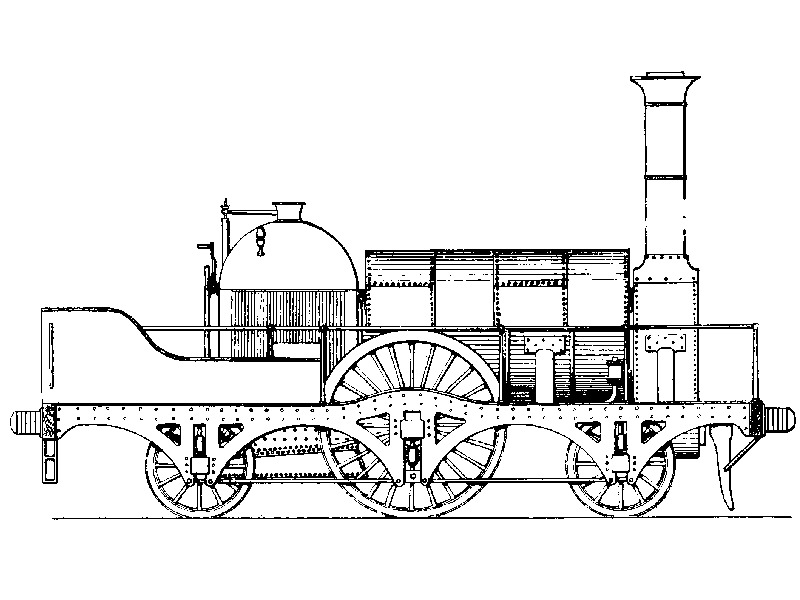
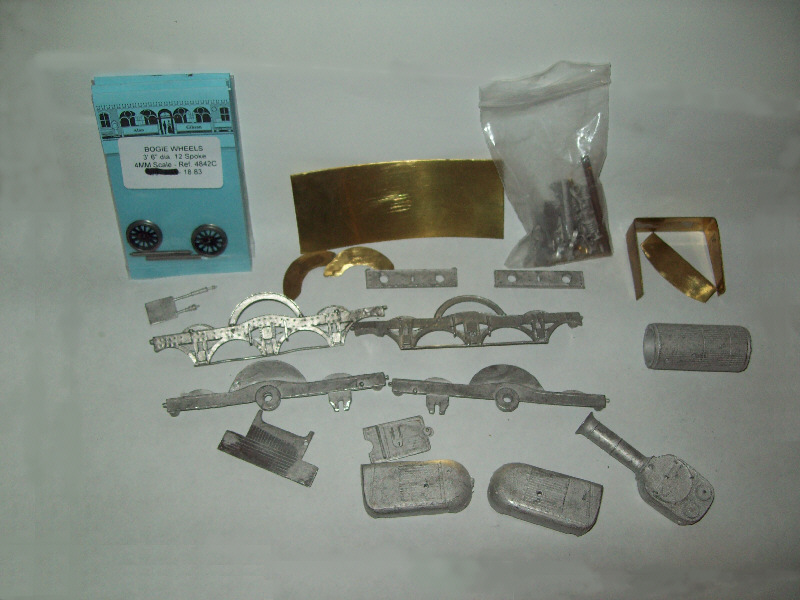
The Sun class were a smaller wheeled version of the Firefly class, for use on the steeper gradients west of Swindon. 21 were built by 3 different builders between 1840 and 1842. They were found to lack adhesive weight, and all converted to saddletanks in 1849. Subsequently they worked branchlines, and in the London area. The last was withdrawn from service in 1879.
Another of the ex Mike Sharman ebay kits. The photos on ebay show what seems to be a decent kit, but the parts supplied are not as illustrated, the bunker being a piece of bent up brass sheet of the wrong shape, and the sideframes also incorrect, being designed for 7 foot wheels rather than the correct 6 foot wheels. Looks like a rather crude bodge to the firefly kit which will require a lot of work to bring up to a decent standard. At a minimum, the small splashers for the carrying wheels need removing, and smaller splashers are needed for the driving wheels.


The Leo class was the company's first goods engine design. 18 were built by 3 different builders in 1841 and 1842. Like the Sun class, they were found to lack adhesive weight, and converted to saddletanks in the early 1850s. The last was withdrawn in 1874.
Mike Sharman made a whitemetal kit of this locomotive, but I have never had one. I do have his kit of the Hercules class which has the spare castings for the Leo, so made a 3D model of the Leo to be printed on my Photon printer. The chimney has been reduced in size from the rather chunky item originally supplied with these kits. The front axlebox will probably also be reduced in size to something more realistic.
The running gear for this model is a little problematic. The Sharman kit had outside cranks from a single thickness of brass sheet on scale length axles, which cleared the footplate. Using Gibson outside cranks which are very much thicker means either using a longer axle, making the model wider and possibly fouling platforms, or reducing the footplate width to clear the cranks
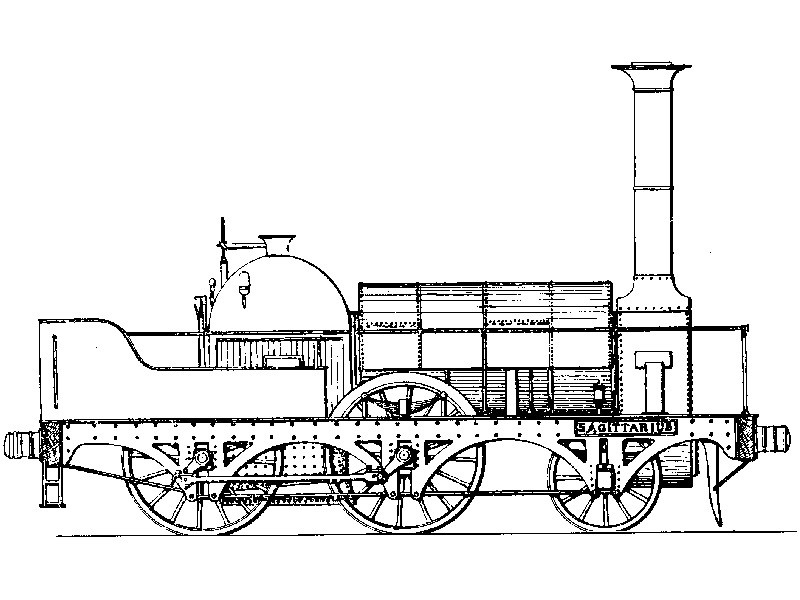
There were two variants of this loco. When initially converted to a tank loco they were given a small bunker and the frames extended. This was later enlarged in length and height and the frames extended further.
This was going to be built from a recast Mike Sharman kit, but the castings (in particular the tank) were so bad that I have instead done a 3D model and will print this in resin.
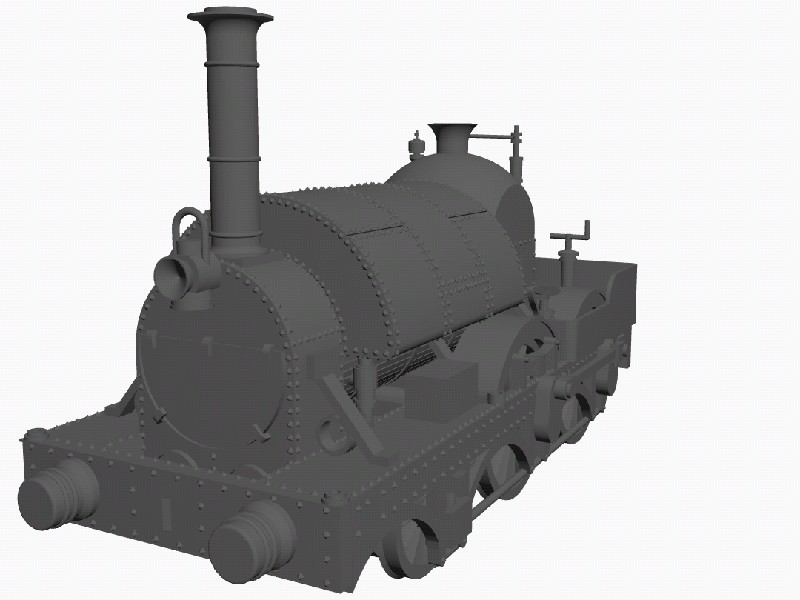

The Victoria class comprised 18 locomotives built at Swindon between 1856 and 1864. The last was withdrawn in 1881.
A 3D printed model is available from Sparkshot Custom Creations printed either by Shapeways, or on one of their own Photon printers. The chassis is also available, but is rigid.

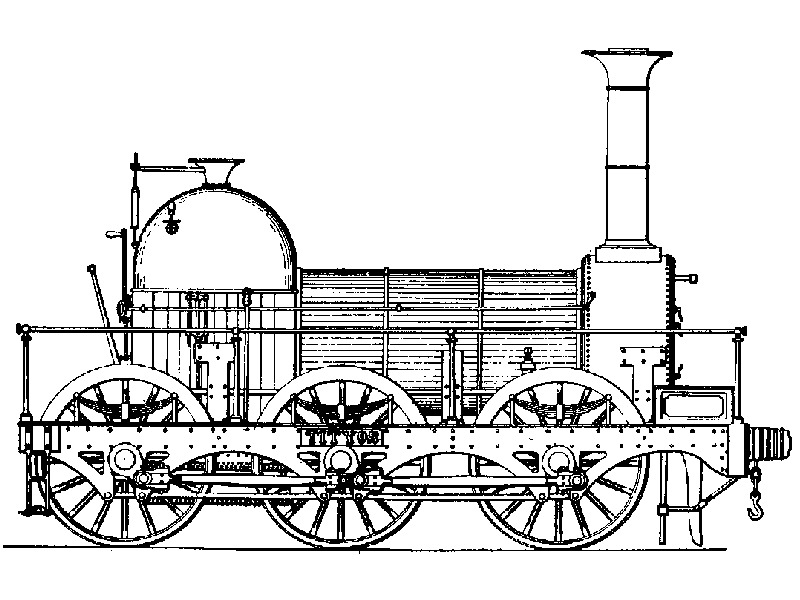
The need for more goods engines resulted in the last 4 Firefly class locomotives being completed as 0-6-0 goods locomotives in 1842. The last was withdrawn in 1871.
Mike Sharman made a kit of this locomotive, but I was never able to obtain one until very recently. The plan was to use a Mikes Models stationary engine kit (a derivative of the Sharman locos) with a scratchbuilt chassis and sideframes. I now plan on using a 3D printed body

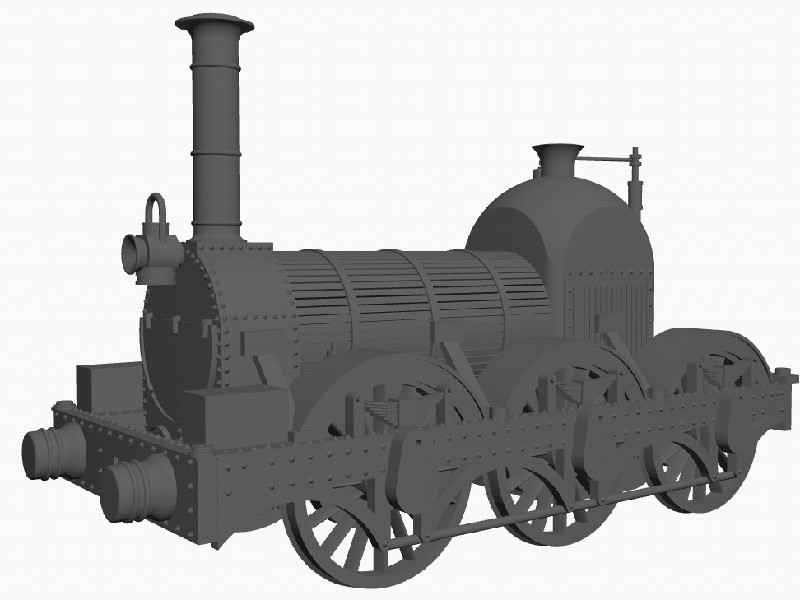


The Banking class consisted of 4 engines built in 1852 and 1854, and the last was withdrawn in 1889.
This is built from the Broad Gauge Society FL02 Banking/Goods loco etched brass kit, and has still to have motor/gearbox and pickups added. There are an awful lot of optional parts to cover the many variations of these locomotives. A difficult model on account of the large number of incredibly fiddly parts and the
fact that it is not possible to separate the body and chassis as in a conventional locomotive kit. Wheels are from Sharman Wheels. Nameplates are by Jackson Evans.
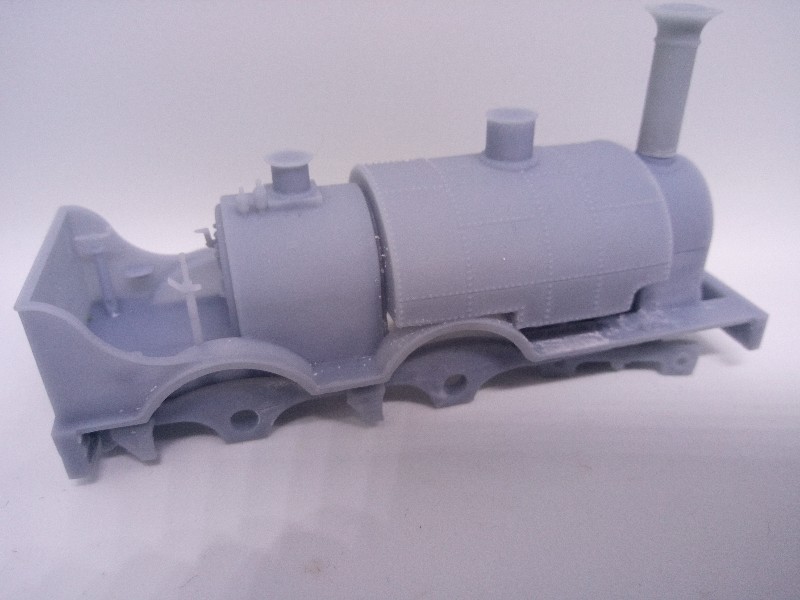
These locomotives were originally built with 'wavy' splashers over the bogie wheels as in the BGS kit FL01 Corsair. They were later rebuilt with a more conventional straight footplate over the front bogie.
A 3D printed model is available from Sparkshot Custom Creations printed either by Shapeways, or on one of their own Photon printers. The chassis is also available, but is rigid.
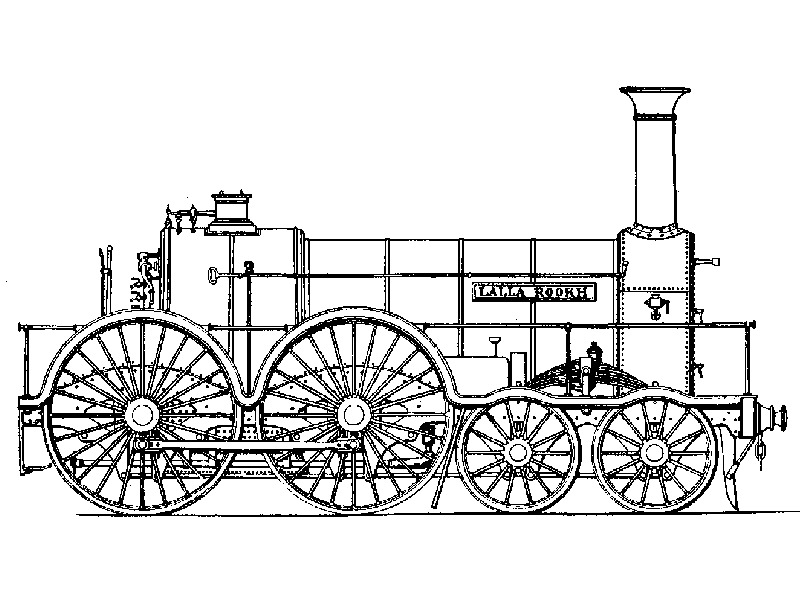
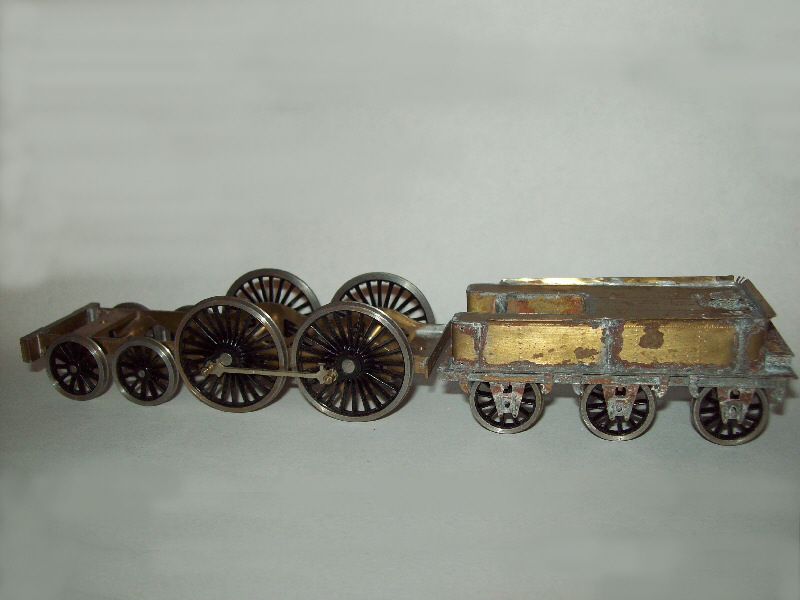
The only 4-4-0 tender engines to run on the broad gauge, ten of these were built in 1855, and they lasted until 1876. This is built from profile milled frames by IKB Models, and will have smokebox, boiler and firebox from the Broad Gauge Society banking loco kit. The tender is
Broad Gauge Society etched brass kit F007
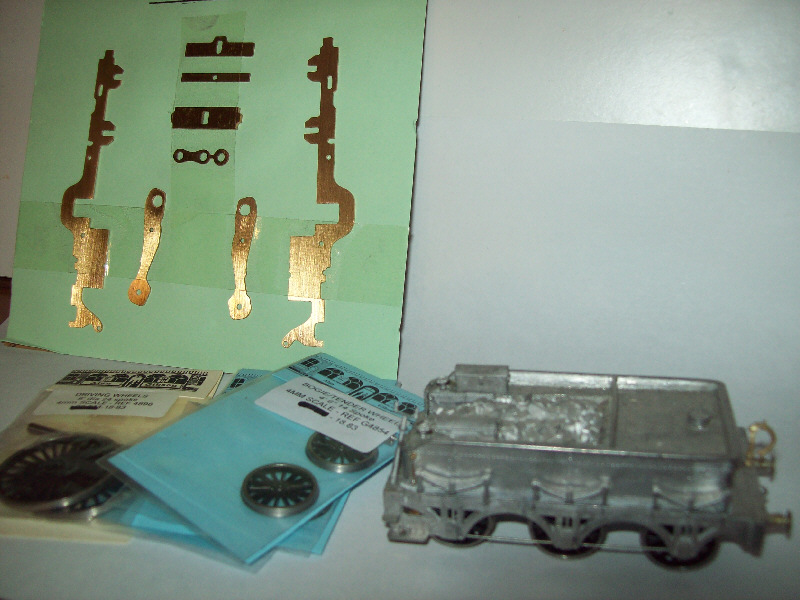
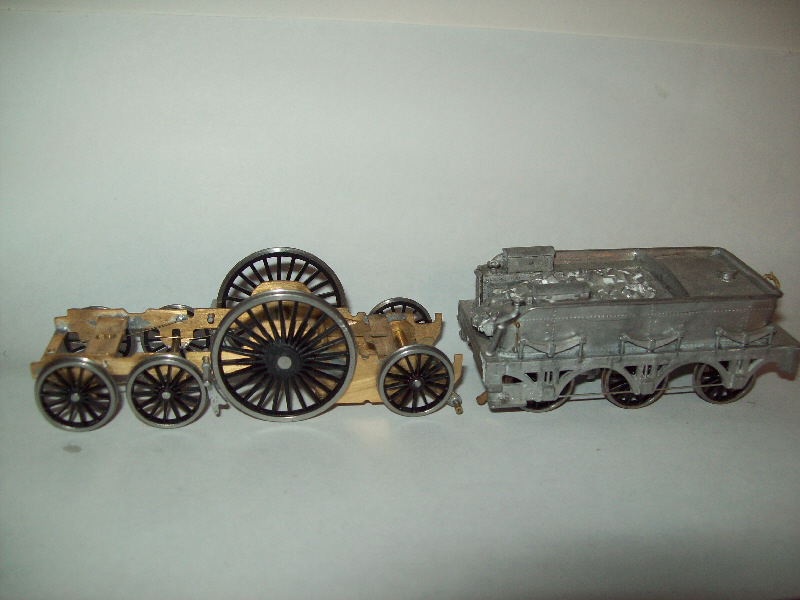
The classic broad gauge locomotive. Officially rebuilds of the earlier Iron Duke class, but actually new engines, 24 of these were built between 1871 and 1888. This kit was originally produced by Keyser back in 1981 as part of the 'Milestones' range, until Ks demise in 1986. The Milestones range was purchased by IKB Models in 1993, who designed a new compensated chassis with tender drive. I have the tender and loco chassis, but unfortunately Kay Butler
retired before I managed to purchase a loco body. This kit is now owned by the Broad Gauge Society, who plan to release it again. It has taken so long to rerelease that I bought two of the Mike Hulme recast kits, and some of the BGS brass castings in attempt to finish the model. Anyone coming across these recast kits be warned - the boiler/firebox casting is badly deformed. Finger pressure appears to have damaged the mould on both sides of the firebox. I am having to resort to flooding the damaged areas of the casting with solder, and filing back to shape.



The newest Broad Gauge Society etched brass loco kit. This was supposed to have been a simple to build kit, suitable for beginners, but unfortunately it has fallen far short of this goal. Some peculiar design (to be polite), cryptic instructions, under-etching and some
truly appalling quality lost wax brass castings, ensure that all but the most determined beginners will fail to complete this. Still some details and the cab fittings to
add and the chassis needs pickups.

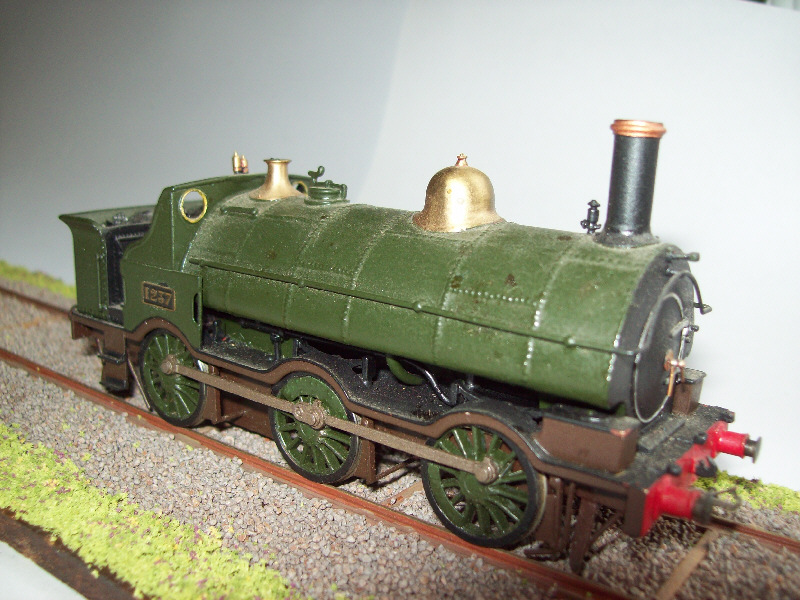
Broad gauge versions of Armstrong's standard tank engines, ten of these were built in 1876, and a further 5 in 1878. Thirty five were also converted from narrow gauge between 1884 and 1888. This model represents one of the very early engines as illustrated in the RCTS 'Locomotives of the Great Western Railway Pt2' Book Fig B93. It has larger sandboxes, and only a weatherboard rather than a cab.
This model is built from the Alan Gibson kit, heavily modified. The kit has a 3 course tank which has had the detail filed off and an overlay of 5 thou brass with the detail embossed to represent a 6 course tank. A new footplate and 'wavy' valances are from 15 thou brass. The chimney was turned up on the lathe, but uses the base from the kit. The weatherboard is a cut down version of the kit cab, and the brakes and sandboxes
are from odd offcuts. This is driven on the rear axle by a Mashima 1420 motor mounted vertically in the firebox using a High Level Roadrunner 54:1 gearbox. Numberplates are from 247 Developments.
A second loco was built in later condition using some of the 'alternate' parts in the kit, a scratchbuilt chassis and an extra tank moulding which Alan very kindly supplied. This is however still incomplete.

The trouble with building this model is that there are no commercially available wheels this large. Kay Butler modelled one of these years ago by turning up perspex discs and fretting out the spokes. I doubt my ability to make a decent job in this manner, so I have designed a wheel in Gmax to be 3D printed in PLA or ABS. As the
wheel was flangeless, the lack of a steel tyre should not be a problem (I hope). I have now printed an initial batch of wheels on my Prusa I3 printer at a fairly coarse 0.4mm resolution, and some of these have been cleaned up and mounted by BGS member Douglas Johnson for use on his scratchbuilt model.
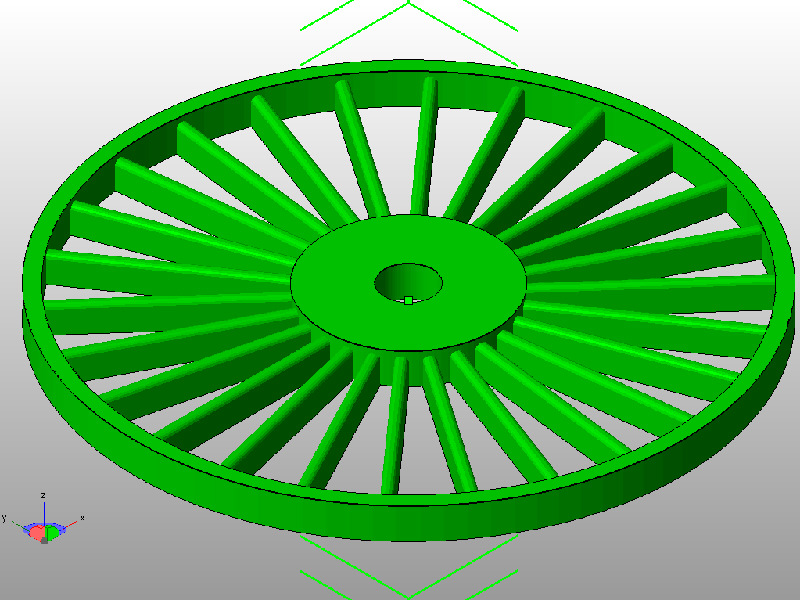
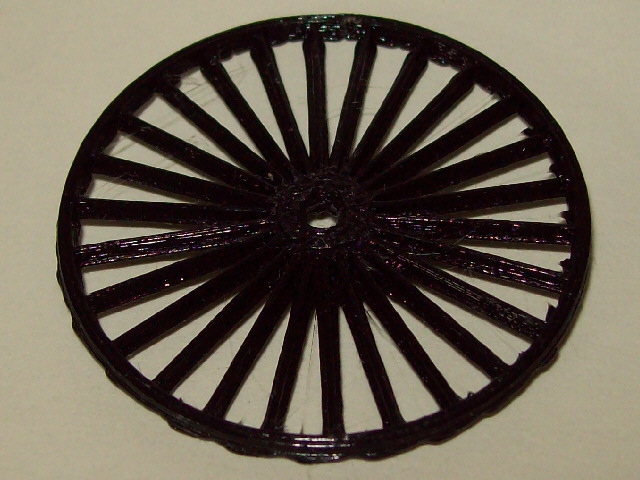

Meanwhile I am experimenting with 3D modelling one of the rebuilds to be printed with an anycubic SLA printer (or possibly shapeways).

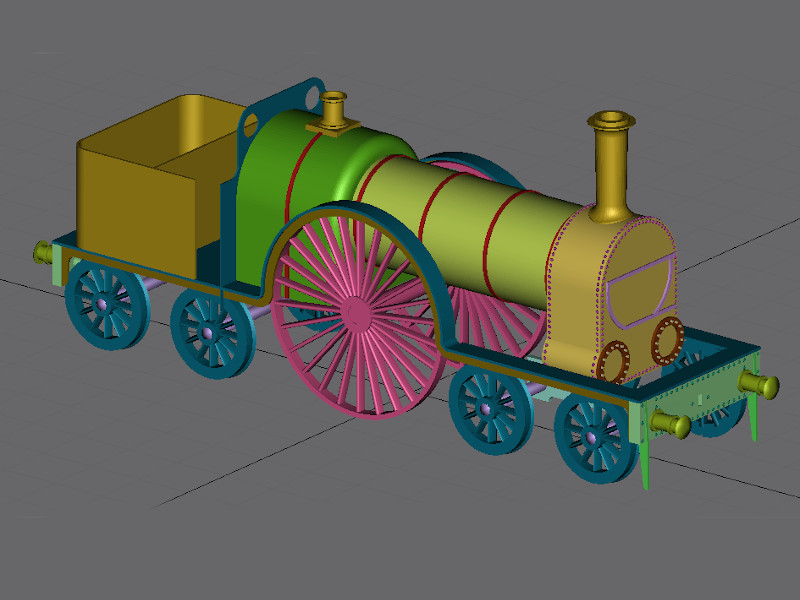
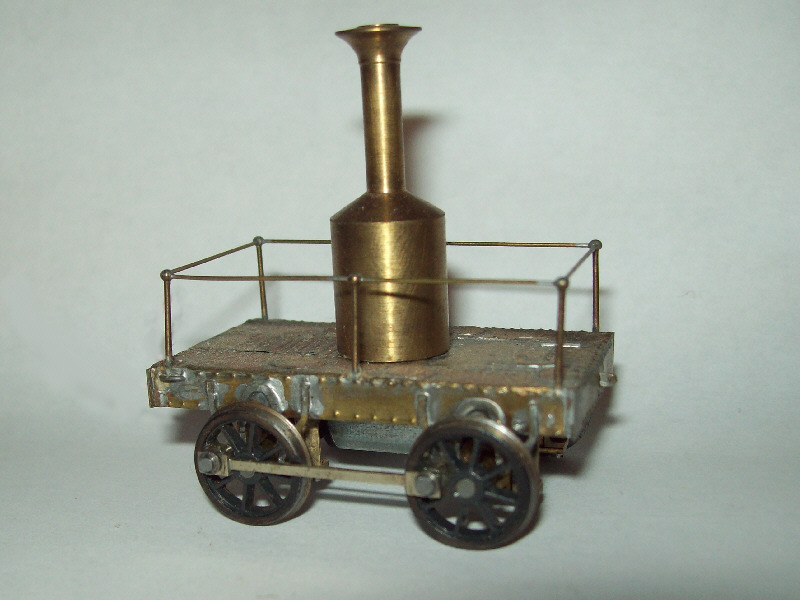
Tiny was a vertical boilered locomotive built in 1868 for the South Devon Railway's Sutton Harbour Branch in Plymouth. It was withdrawn in 1883 for use as a stationary engine at Newton Abbot Works. In 1927 it was put on display on the platform of Newton Abbot station, and more recently has been moved to the railway museum at Buckfastleigh. It is the only surviving broad gauge engine in existence (Firefly and Iron Duke being replicas).
There have been several static models of Tiny, but to my knowledge no-one has motorised one, so this was an attempt to produce such a loco. It was scratchbuilt from brass. Boiler detail, cylinders and pistons still to be added. Powered by a Mashima 1015 motor mounted
horizontally under the footplate and using a spud gearset driving both axles. It is compensated using the worms as pivots. Wheels are Alan Gibson 12mm wagon wheels jig drilled to insert crankpins. Nameplates
custom etched by Narrow Planet (Serif B style, 1.5mm size).

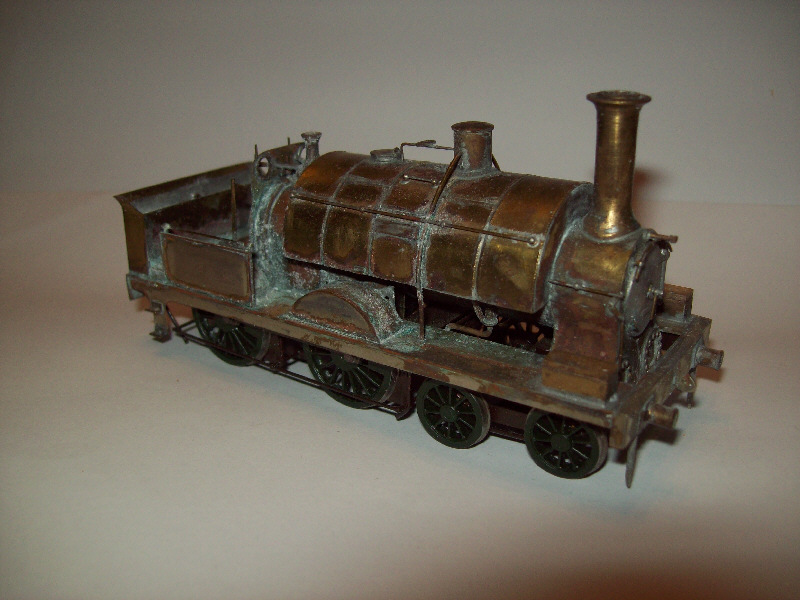
This loco and it's sister Magpie were originally sidetanks built in 1861 by Sharp, Stewart & Co. for the Carmarthen & Cardigan Railway. They were sold to the South Devon Railway in 1872 where they were rebuilt with 900 gallon saddletanks. Heron lasted to the end of the broad gauge in 1892, whilst Magpie was withdrawn in 1889.
Scratchbuilt from 15thou brass sheet. Seen here with an SDR 2nd class coach scratchbuilt from plasticard. Driven on the front coupled axle by a Mashima 1420 mounted horizontally in the firebox through a High Level Roadrunner 54:1 gearbox. Nameplates custom etched by Narrow Planet (Serif B style, 2mm size). It still needs some of the detail on
the bunker (beading, handrails and tool hooks) finishing.
Built from the BGS FL01 'Corsair' locomotive kit, with scratchbuilt brakegear and cutouts for the clack valves at the front of the tank added to represent one of the first batch of SDR passenger locomotives in early condition, before the replacement of the 'wavy' bogie valances. It uses Sharman wheels, and a 1620 motor mounted at about 45 degrees in the firebox driving the rear wheelset through a London Road Models gearbox and 40:1 gears. This is probably the easiest currently available broad gauge locomotive kit, but not simple on account of the tight clearances around the wheels and splashers. The front bogie spring required considerable thining to allow the bogie to pivot. Nameplates custom etched by Narrow Planet (Serif B style, 2mm size).

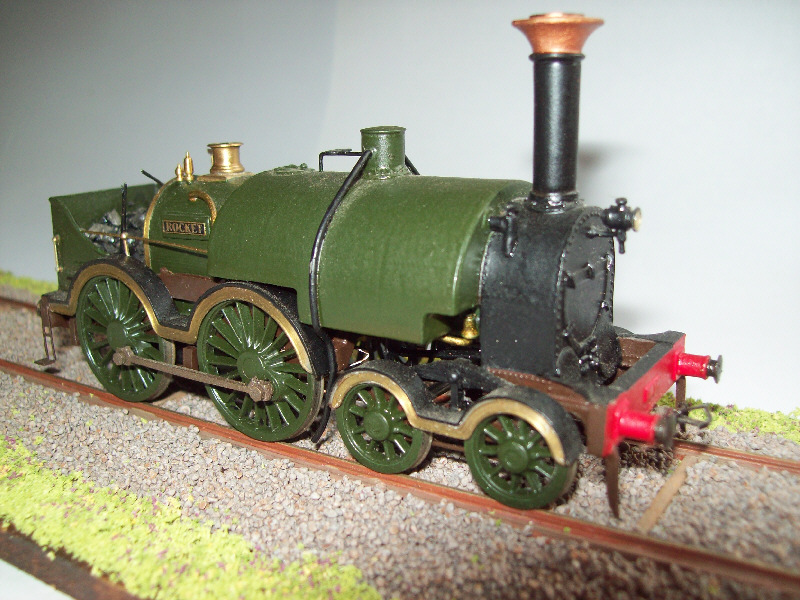
Page updated : 22 Feb 2022